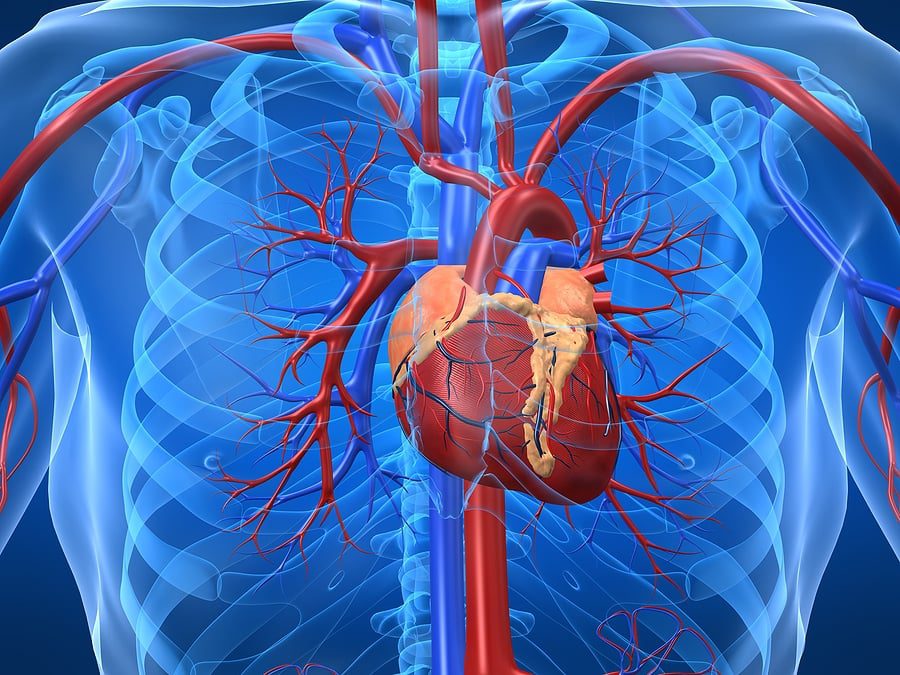We all know that heart disease is the leading cause of death in both women and men. Would you like to learn how to reduce plaque and decrease your risk of cardiovascular disease? Today we will discuss some amazing information that will give you a new understanding of heart disease, a newfound resolve and an amazing tool to help improve heart health.
What Is the Glycocalyx?
You’ve probably never heard of “glycocalyx” before, but you will be so glad you are learning about it now. The inner walls of your arteries are lined with a single layer of cells called the endothelium. The importance of the endothelium has been recognized for decades. It releases nitric oxide (NO), which dilates or relaxes the arteries and regulates blood pressure and flow. The endothelium also maintains the health of the arteries via signaling molecules that control blood clotting, inflammation, oxidative stress and new blood vessel growth.
What was unknown until fairly recently is that above the endothelium protruding into the lumen, or inner opening of the blood vessels, is a layer of fuzzy, hairlike cells. This is the glycocalyx, and it is our first line of defense against endothelial and arterial damage. Just as Teflon prevents food from sticking to your pans, the gel-like glycocalyx keeps your arteries smooth and slick for optimal blood flow. The glycocalyx also serves as a selective physical barrier that prevents harmful substances like oxidized LDL cholesterol, fats, white blood cells and inflammatory compounds from penetrating the endothelium and forming plaque deposits in the artery walls.
In other words, a robust, dynamic glycocalyx protects against cardiovascular disease. The bad news is that the glycocalyx is easily damaged. Smoking and other toxins, diabetes, hypertension, a high-sugar diet and obesity erode this protective layer. Elevated blood sugar is particularly harmful. Studies have shown that the glycocalyx of individuals with diabetes is 50% thinner than that of healthy people! The loss of this slick, protective “Teflon” coating impairs blood flow and opens the gates for endothelial damage and plaque buildup.
Here are some natural solutions for enhancing glycocalyx function:
1. Avoid sugar. Loading up on sugar damages and thins the glycocalyx. The same goes for starches and refined carbohydrates such as bread, pasta, cookies, etc., which are quickly converted to sugar.
2. Eat less often. When you eat, especially sugars, the glycocalyx shrinks to allow glucose and other nutrients to be absorbed from the bloodstream into the cells. It then slowly rebuilds over the next six or so hours. If you eat every few hours or snack all day as many people do, your glycocalyx never has time to rebuild. For best results, I recommend intermittent fasting. At the very least, space out your meals and minimize snacking, especially on carbohydrates.
3. Manage your blood sugar and blood pressure. The adverse effect of elevated blood sugar on the glycocalyx is a primary reason why diabetes dramatically increases the risk of heart disease. Hypertension’s excessive pressure on the artery walls also contributes to glycocalyx dysfunction.
4. Increase your intake of antioxidants and anti-inflammatories. Oxidative stress and inflammation take a toll, which is why smoking and other toxins are so harmful. They injure the glycocalyx, which leads to arterial damage throughout the body. Make dietary and supplemental antioxidants and natural anti-inflammatories such as omega-3 fatty acids and
curcumin part of your daily regimen.
5. Take Arterosil. This cutting-edge nutraceutical supplies your body with nutrients needed to restore the glycocalyx.
Protect Your Glycocalyx With Arterosil
Arterosil is a nutraceutical that contains polysaccharides which are closely akin to the building blocks of the human glycocalyx. By providing your body with these raw materials, it enhances glycocalyx rebuilding and repair and overall vascular health.
Studies have shown that this unique nutraceutical increases arterial elasticity, a marker of vascular health, by as much as 89.6% and significantly reduces blood pressure. MRI studies reveal that Arterosil also stabilizes arterial plaque, especially the “vulnerable” lipid-filled plaques that are implicated in heart attacks and strokes.
In one study, MRIs of men and women with plaque deposits in their carotid arteries who took Arterosil for three months had average plaque regressions of 46.8%-64%. It literally reversed cardiovascular disease!



